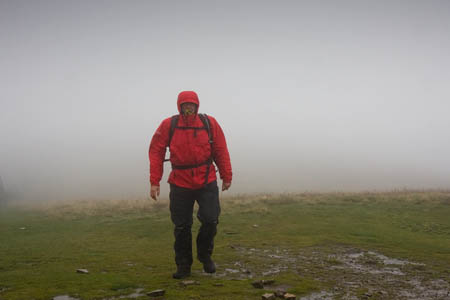Last year was the UK’s second wettest ever, with rainfall just a few millimetres short of the record set 12 years ago.
The persistent wet weather after a dry spring resulted in total 2012 rainfall for the UK of 1330.7 mm, which is 6.6 mm short of the record set in 2000.
Provisional figures released today by the Met Office confirmed what most outdoors enthusiasts already suspected.
The official meteorological service said the exceptionally wet year was characterised by a dry start which quickly gave way to very wet weather, with April and June both being the wettest on record.
Unsettled weather continued through to the end of the year, with December being the eighth wettest on record for the UK.
England topped the tables 2012 being its wettest year on record; it was the third wettest for Wales, 17th wettest for Scotland and 40th wettest for Northern Ireland. Records go back to 1910.
Four of the top five wettest years in the UK have occurred since 2000.
The Met Office said evidence suggests we are getting slightly more rain in total and it may be falling in more intense bursts.
Looking at annual rainfall for the UK, the country is getting wetter as a whole getting wetter in recent decades.
Long-term averages of 30-year periods show an increase in annual rainfall of about 5 per cent from the period between 1961 and 1990 and that between 1981 and2010.
Preliminary research from the Met Office also suggests we may have seen a change in the nature of the rain we get, with ‘extreme’ daily rainfall becoming more frequent.
An analysis of 1 in 100 day rainfall events since 1960 indicates these ‘extreme’ days of rainfall may have become more frequent over time.
Professor Julia Slingo, chief scientist at the Met Office, said: “The trend towards more extreme rainfall events is one we are seeing around the world, in countries such as India and China, and now potentially here in the UK.
“Much more research is needed to understand more about the causes and potential implications.
“It’s essential we look at how this may impact our rainfall patterns going forward over the next decade and beyond, so we can advise on the frequency of extreme weather in the future and the potential for more surface and river flooding.
“This will help inform decision-making about the need for future resilience both here in the UK and globally.”
Changes in sea surface temperatures due to natural cycles and reducing amounts of Arctic sea-ice could be influencing the increase in rainfall, but more research needs to be done before anyone can establish how big a role they play, the Met Office said.
Increasing global temperatures may be another factor. A warmer atmosphere can hold more moisture and we have seen an increase of about 0.7C in global temperatures since pre-industrial times.
The Met Office said this would equate to about a 4 per cent increase in moisture in the atmosphere which means there is a greater potential for heavy rain.
